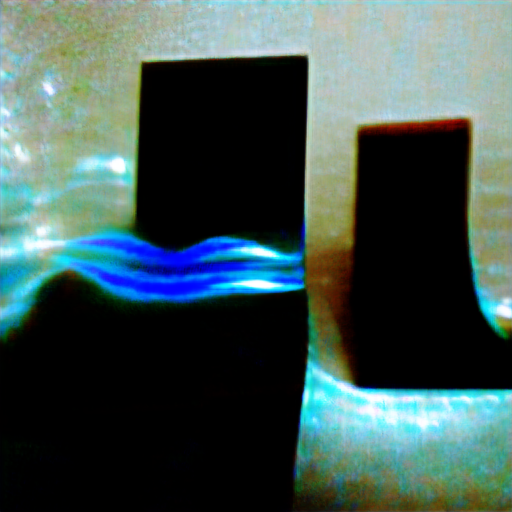Wave-particle duality
|
Wave-particle duality | |
|---|---|

computer prediction of "wave-particle duality" |
Wave–particle duality is the concept in physics that every quantum-mechanical wave phenomenon is accompanied by a corresponding particle phenomenon, and vice versa.
History[edit]
The idea that all matter exhibits both wave-like and particle-like properties dates back at least to the ancient Greeks. In his book Opticorum libri sex (Six books of optics), Leonardo da Vinci (1452–1519) stated that the propagation of light exhibits properties of both waves and particles. In 1803, Thomas Young, an English polymath, performed the famous double-slit experiment, which he described in a pamphlet titled "Experiments and observations on light", read before the Royal Society of London in 1803. One hundred and thirteen years later, Albert Einstein developed a theory of light that included particle-like properties, helping to reconcile the wave-like and particle-like behaviors of light.
Wave-particle duality in quantum mechanics[edit]
It is sometimes useful to consider waves and particles in isolation, but it is more relevant and accurate to consider them as two complementary aspects of a quantum mechanical system. This complementary behavior appears on both the microscopic and macroscopic level. Examples of wave-particle duality in nature include light, electrons, and atoms. The concept of wave-particle duality affects our understanding of atomic structure, light, matter, radioactivity, and even the vacuum itself.
Wave-particle duality in classical physics[edit]
In classical physics, the de Broglie hypothesis that matter has a wave-like nature has been verified not only for photons but also for increasingly massive objects as the objects increase in mass and approach the boundary between ordinary matter and the classical domain of quantum mechanics. Still, the description of every-day macroscopic objects as classical waves is fundamentally misguided, because these objects do not exhibit wave properties such as diffraction and interference on a microscopic scale. A classical object with a wave-like nature is called a wave packet.
Wave-particle duality in the Young's double-slit experiment[edit]
Classical optics demonstrated wave-like properties such as interference and diffraction, which could be explained by classical physics. The observation of 'particles' with these wave-like properties, such as electrons, showed that light has a particle nature also. This duality between waves and particles is an example of the complementarity principle of Niels Bohr, which states that wave and particle characteristics are relative and cannot be observed simultaneously.
An experiment to decide between the wave or particle interpretation of light could be carried out as follows:
See also[edit]
Wave–particle duality
Double-slit experiment
Young's interference experiment
Double-slit experiment
Quantum mechanics
Wave-particle duality
Wave function
Complementarity principle
Planck's quantum hypothesis
Notes[edit]
^ Webster, pp. 613–614 ^ Webster, p. 615 ^ Webster, p. 618 ^ a b Webster, p. 621 ^ Webster, p. 622 ^ Webster, p. 623 ^ a b Webster, p. 624 ^ a b Webster, p. 625 ^ a b Webster, p. 626 ^ Webster, p. 624 ^ a b Webster, p. 631 ^ a b Webster, p. 632 ^ a b Webster, p. 956 ^ a b Webster, p. 629 ^ a b Webster, pp. 629–631 ^ Webster, pp. 629–630 ^ Webster, pp. 629–630 ^ a b Webster, p. 630 ^ a b Webster, p. 631 ^ H. A. Kramers, H. Broglie, R. W. Gurney, The Correspondence Principle, Oxford University Press, Oxford, (1923) ^ S. G. Brush, The Kind of Motion We Call Heat, American Philosophical Society, Philadelphia, (1981) ^ J. D. Jackson, Classical Electrodynamics, John Wiley, New York, (1975) ^ J. D. Jackson, Classical Electrodynamics, John Wiley, New York, (1975) ^ J. D. Jackson, Classical Electrodynamics, John Wiley, New York, (1975) ^ a b c S. W. Hawking, A Brief History of Time, Bantam Books, New York, (1988) ^ a b c d e f g h S. W. Hawking, A Brief History of Time, Bantam Books, New York, (1988) ^ a b c Webster, pp. 628–629 ^ a b c d e f S. W. Hawking, A Brief History of Time, Bantam Books, New York, (1988) ^ a b Webster, p. 632 ^ a b c d S. W. Hawking, A Brief History of Time, Bantam Books, New York, (1988) ^ Webster, p. 633 ^ a b S. W. Hawking, A Brief History of Time, Bantam Books, New York, (1988) ^ Webster, p. 634 ^ a b c S. W. Hawking, A Brief History of Time, Bantam Books, New York, (1988) ^ S. W. Hawking, A Brief History of Time, Bantam Books, New York, (1988) ^ Webster, p. 635 ^ a b c S. W. Hawking, A Brief History of Time, Bantam Books, New York, (1988) ^ a b c d S. W. Hawking, A Brief History of Time, Bantam Books, New York, (1988) ^ a b c S. W. Hawking, A Brief History of Time, Bantam Books, New York, (1988) ^ a b c S. W. Hawking, A Brief History of Time, Bantam Books, New York, (1988) ^ a
References[edit]
Webster, Alan G., "Principles of Physics", Oxford University Press, (2004)
